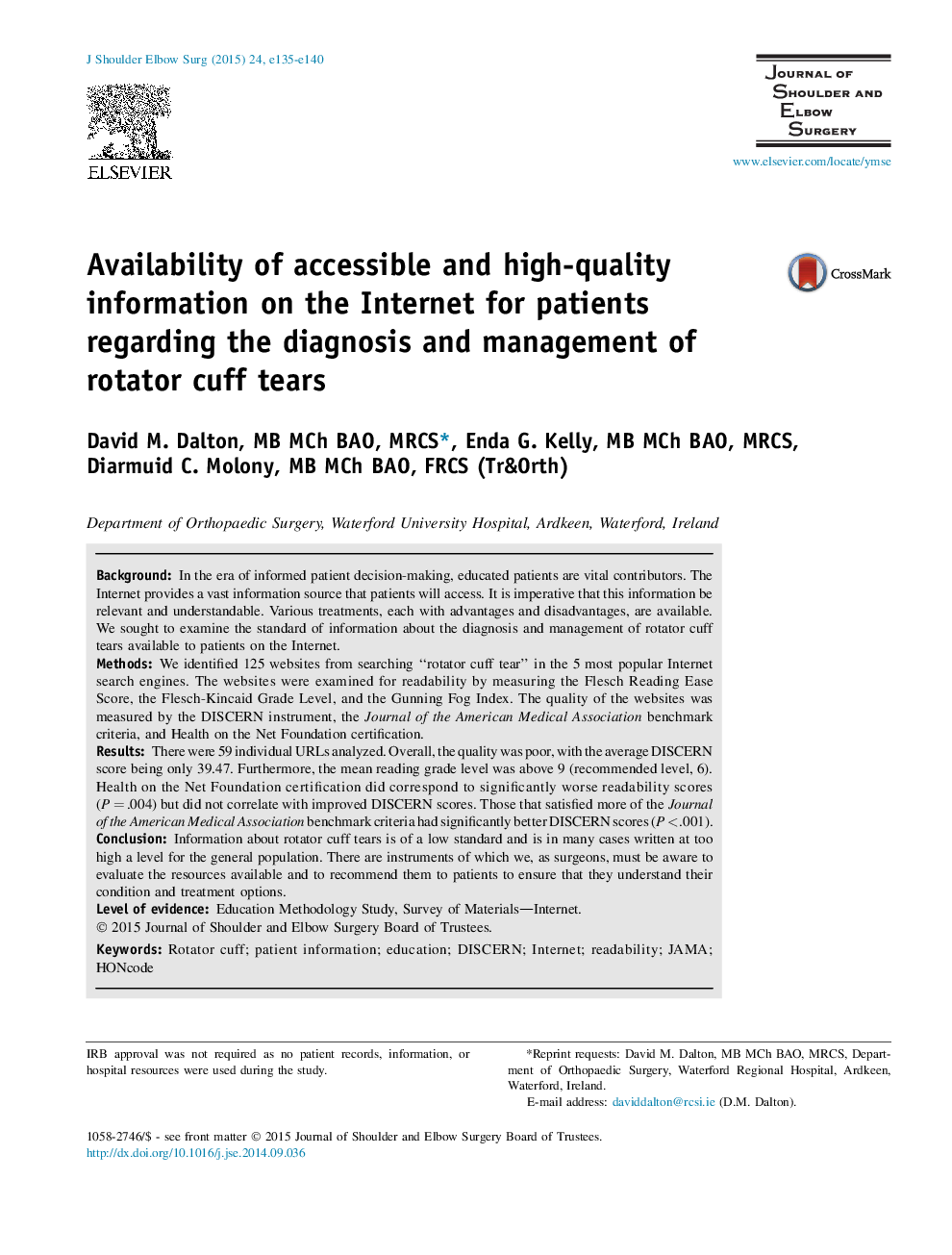| Article ID | Journal | Published Year | Pages | File Type |
|---|---|---|---|---|
| 4073073 | Journal of Shoulder and Elbow Surgery | 2015 | 6 Pages |
BackgroundIn the era of informed patient decision-making, educated patients are vital contributors. The Internet provides a vast information source that patients will access. It is imperative that this information be relevant and understandable. Various treatments, each with advantages and disadvantages, are available. We sought to examine the standard of information about the diagnosis and management of rotator cuff tears available to patients on the Internet.MethodsWe identified 125 websites from searching “rotator cuff tear” in the 5 most popular Internet search engines. The websites were examined for readability by measuring the Flesch Reading Ease Score, the Flesch-Kincaid Grade Level, and the Gunning Fog Index. The quality of the websites was measured by the DISCERN instrument, the Journal of the American Medical Association benchmark criteria, and Health on the Net Foundation certification.ResultsThere were 59 individual URLs analyzed. Overall, the quality was poor, with the average DISCERN score being only 39.47. Furthermore, the mean reading grade level was above 9 (recommended level, 6). Health on the Net Foundation certification did correspond to significantly worse readability scores (P = .004) but did not correlate with improved DISCERN scores. Those that satisfied more of the Journal of the American Medical Association benchmark criteria had significantly better DISCERN scores (P < .001).ConclusionInformation about rotator cuff tears is of a low standard and is in many cases written at too high a level for the general population. There are instruments of which we, as surgeons, must be aware to evaluate the resources available and to recommend them to patients to ensure that they understand their condition and treatment options.
